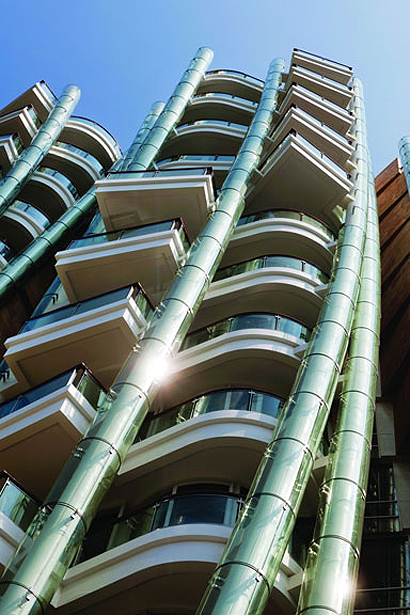|
|
||
|
Frank Gehry, often praised as the greatest architect of the age, is sometimes criticised for an excessive sculpturalism. From Bilbao to Los Angeles, his blockbuster buildings are predicated on a wild expressionism that often bears little relation to their contents. More than any other architect, Gehry learnt the lessons of architecture as sign from the Venturis on Vegas. In Hong Kong, however, on a spectacular site high above the city, he has restrained himself. If anything, the new block, portentously branded as “Opus”, owes more to the fluid twisting of his Fred and Ginger building in Prague, which proved one of the city’s first and most significant expressions of post-communist freedom. The block rises from an angular, stone-clad base intended to invoke a quarry, hewn out by construction. The tops of these cubic elements create a series of planted terraces, an intimation of nature reclaiming construction. The block itself also features spines of stone, each floor twisted a little over from the one below, like a series of geared rotations, to create a shifting volume. It doesn’t exactly reduce the mass of the structure but it does reduce the monotony of dim extruded towers evident in the cityscape below. More surprising though are the glass-encased columns that seem to sway in the wind like reeds – or the bamboo which apparently inspired Gehry. It produces an odd effect, like a wobbly Pompidou, but it grows on you.
The apartments each occupy an entire floor. The views are astonishing but there is no real attempt to make the thing look like money. The balconies are narrow, the materials a simple mix of wood, stainless steel, glass and stone and the spaces are big by Hong Kong standards, but not outrageously so. It is all surprisingly modest. Instead the focus is on the location, the view and the city below, as if this were a building apart from the city but still very much about it. As an exclusive private block, the Opus will never exert the same impact as a public institution, but it does create interest and sparkle above the island landscape. It is interesting to compare the Opus with “New York by Gehry” on Spruce Street, which also twists and folds, to create a shimmering metallic profile on the skyline that looks radically different under changing skies. But the apartments inside disappoint, the undulating facade creating little more than expensively realised bays. In Hong Kong the building is less theatrical, yet the interiors are more coherent, the elevations more informed by the plans. Gehry might just be becoming a modernist after all.
|
Image Thomas Mayer; Courtesy Swire Properties
Words Edwin Heathcote |
|
|
||






















